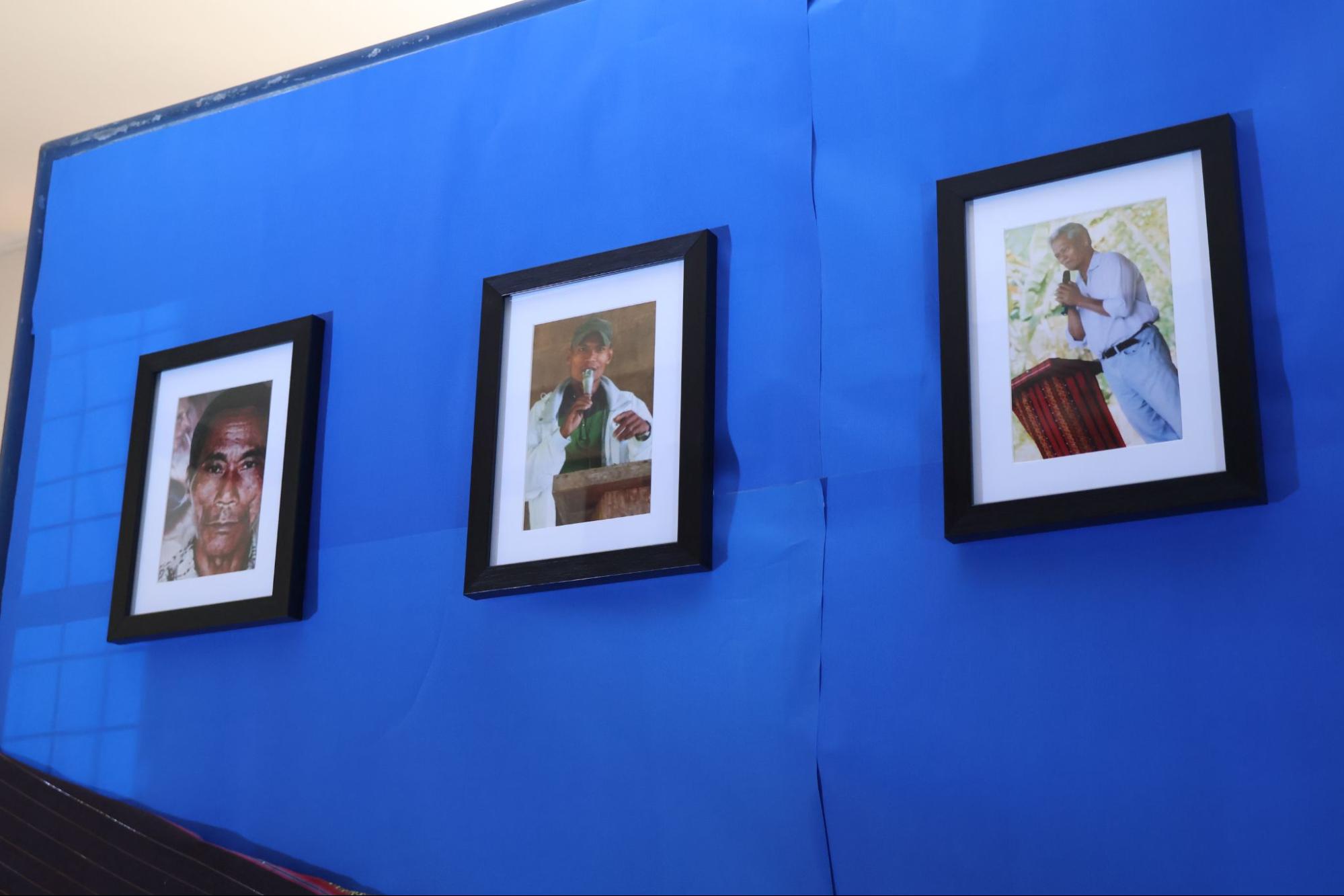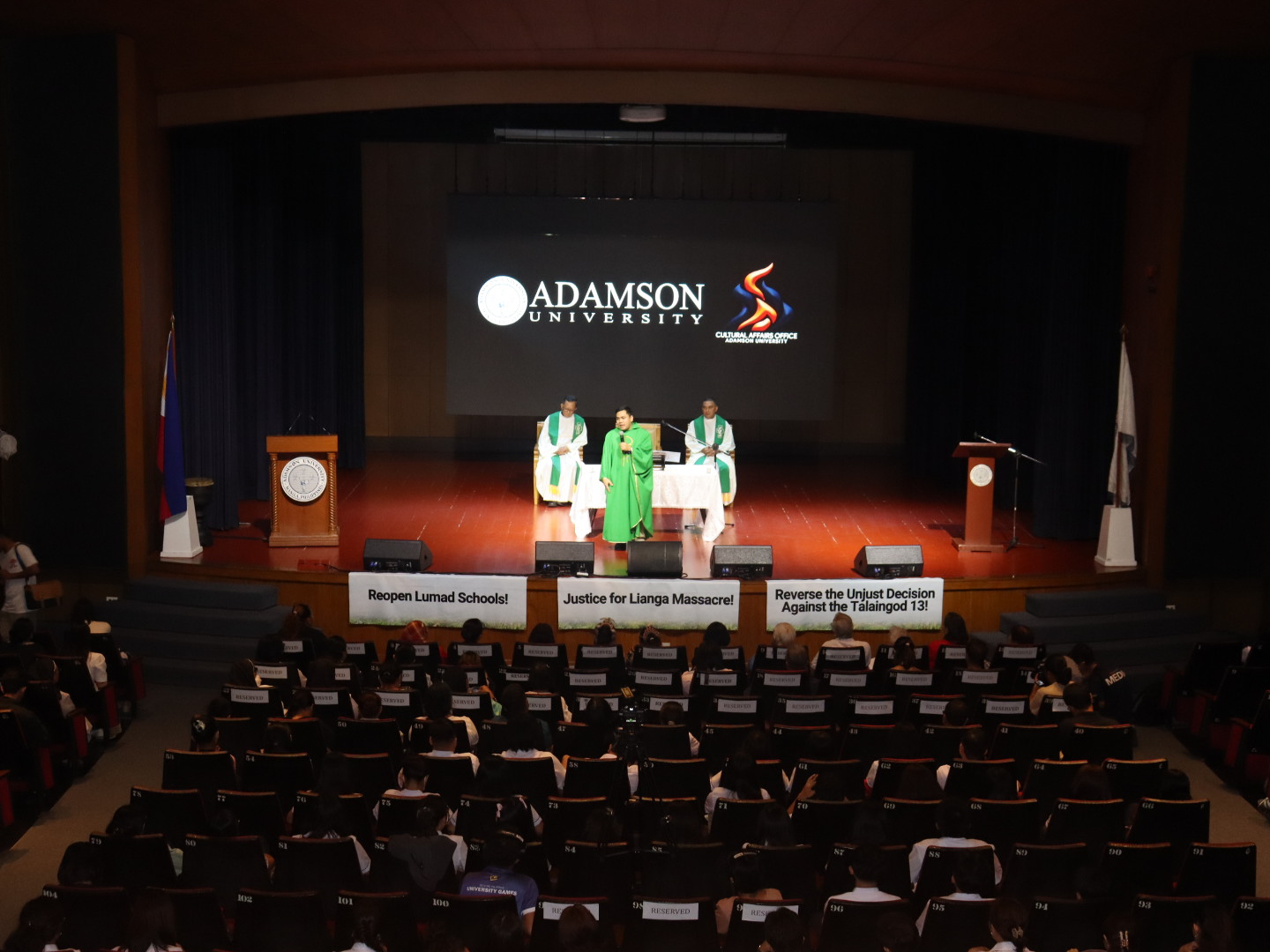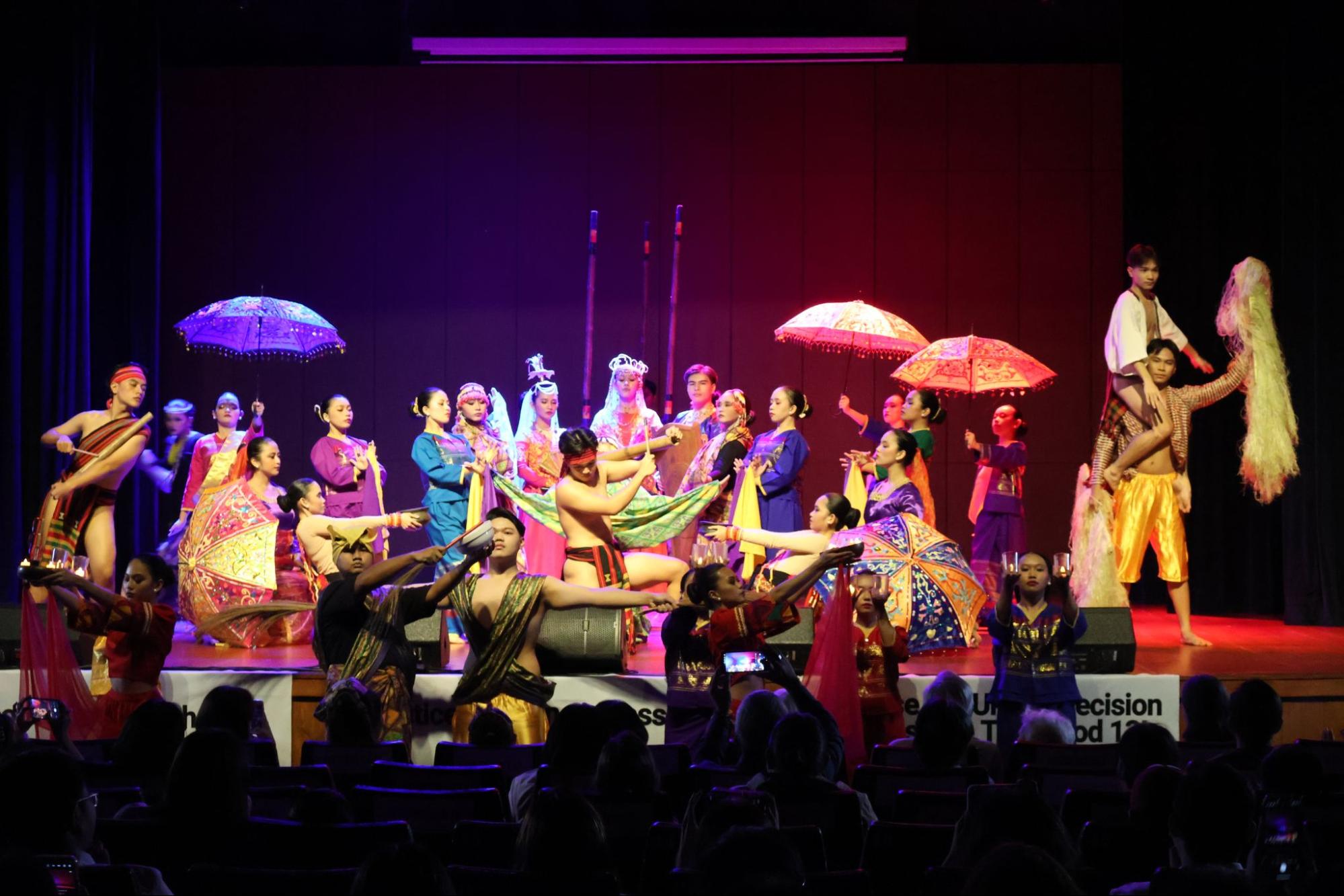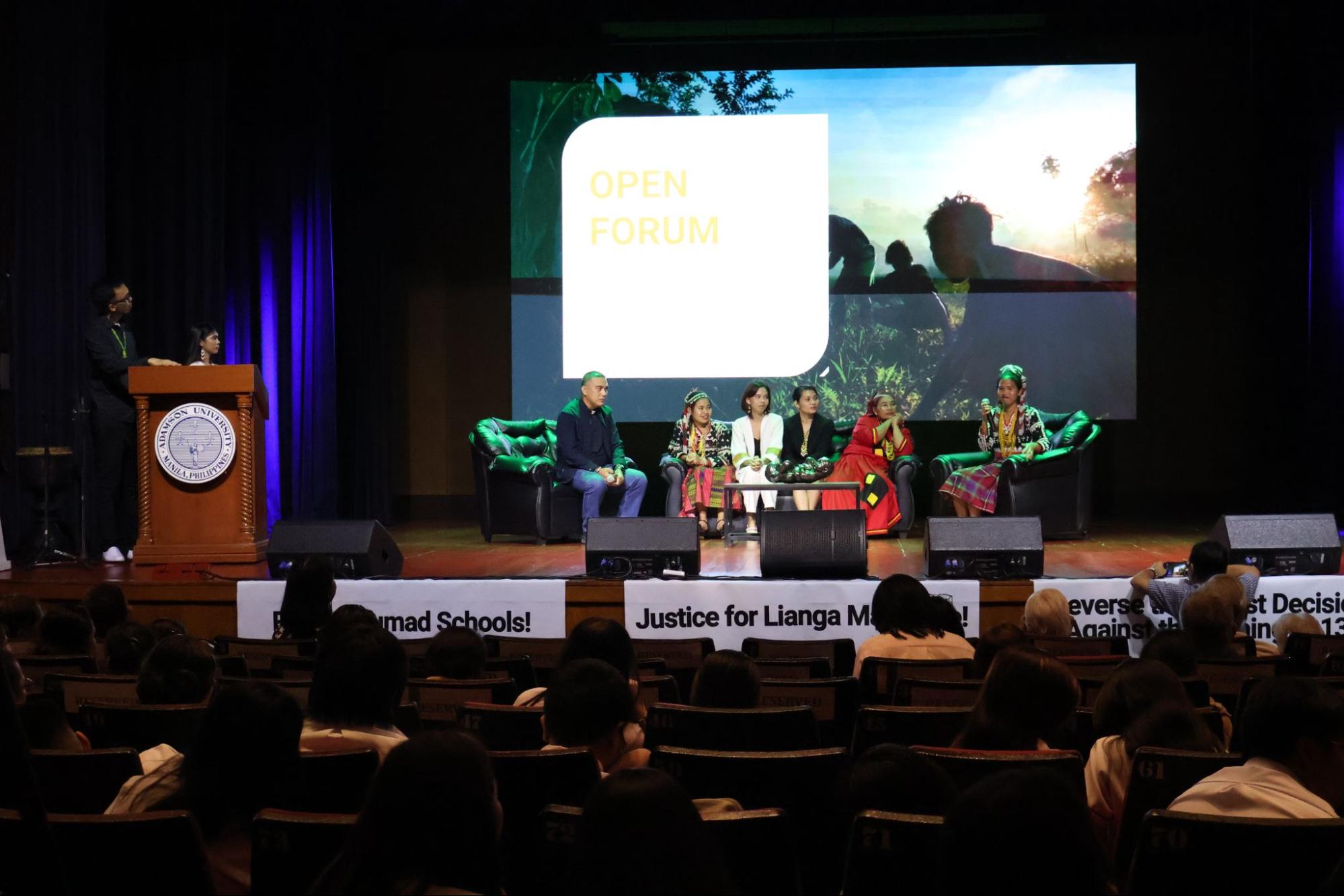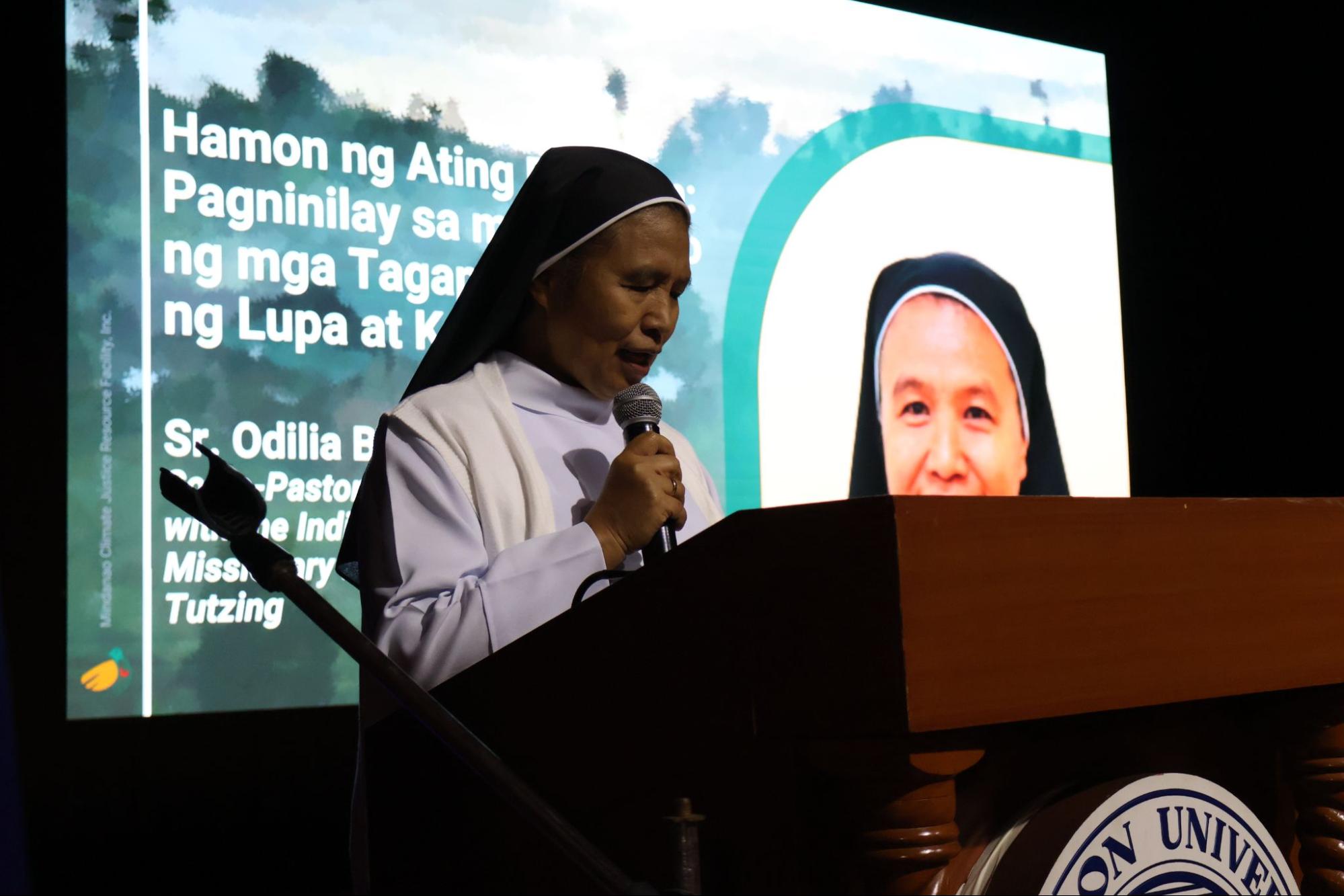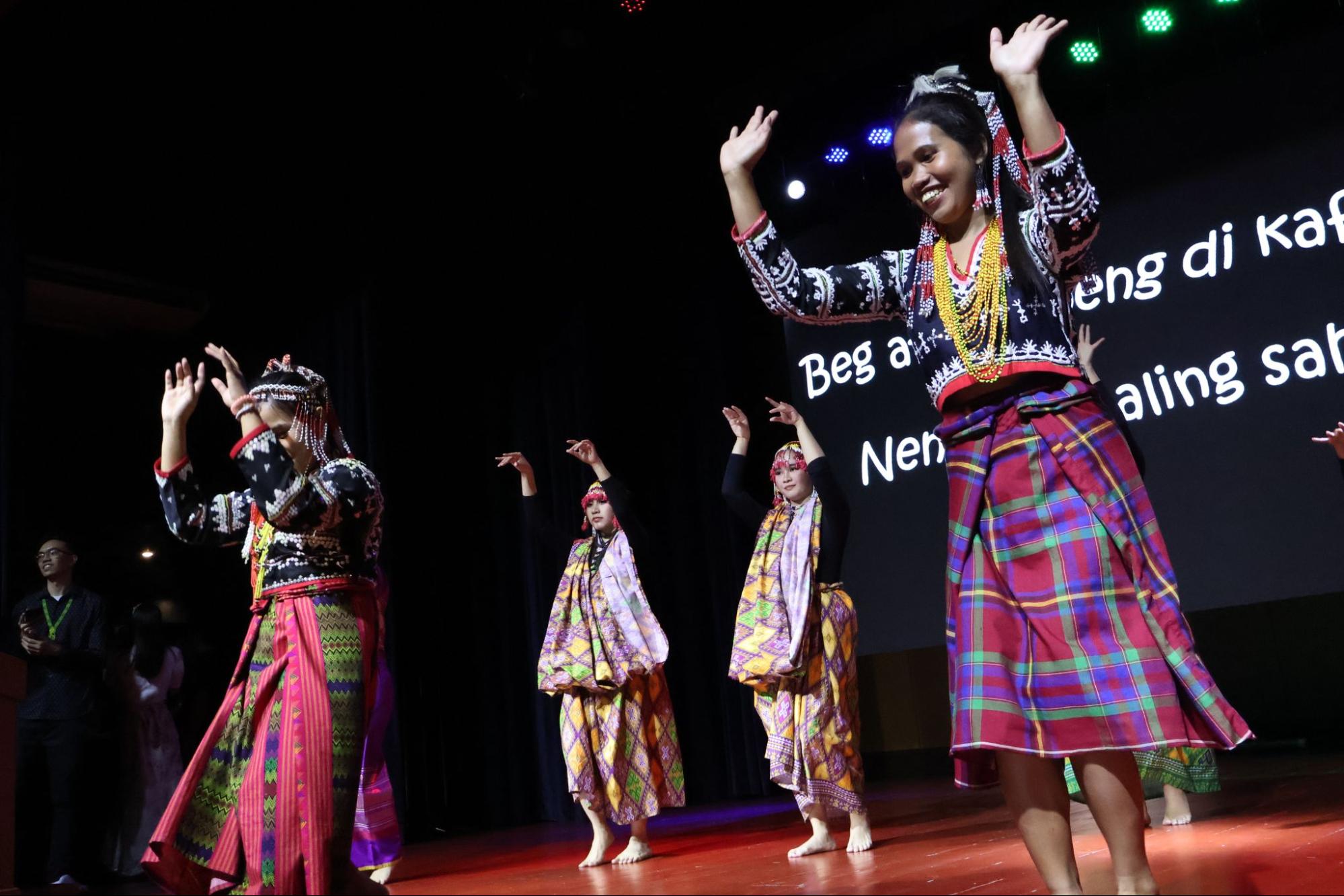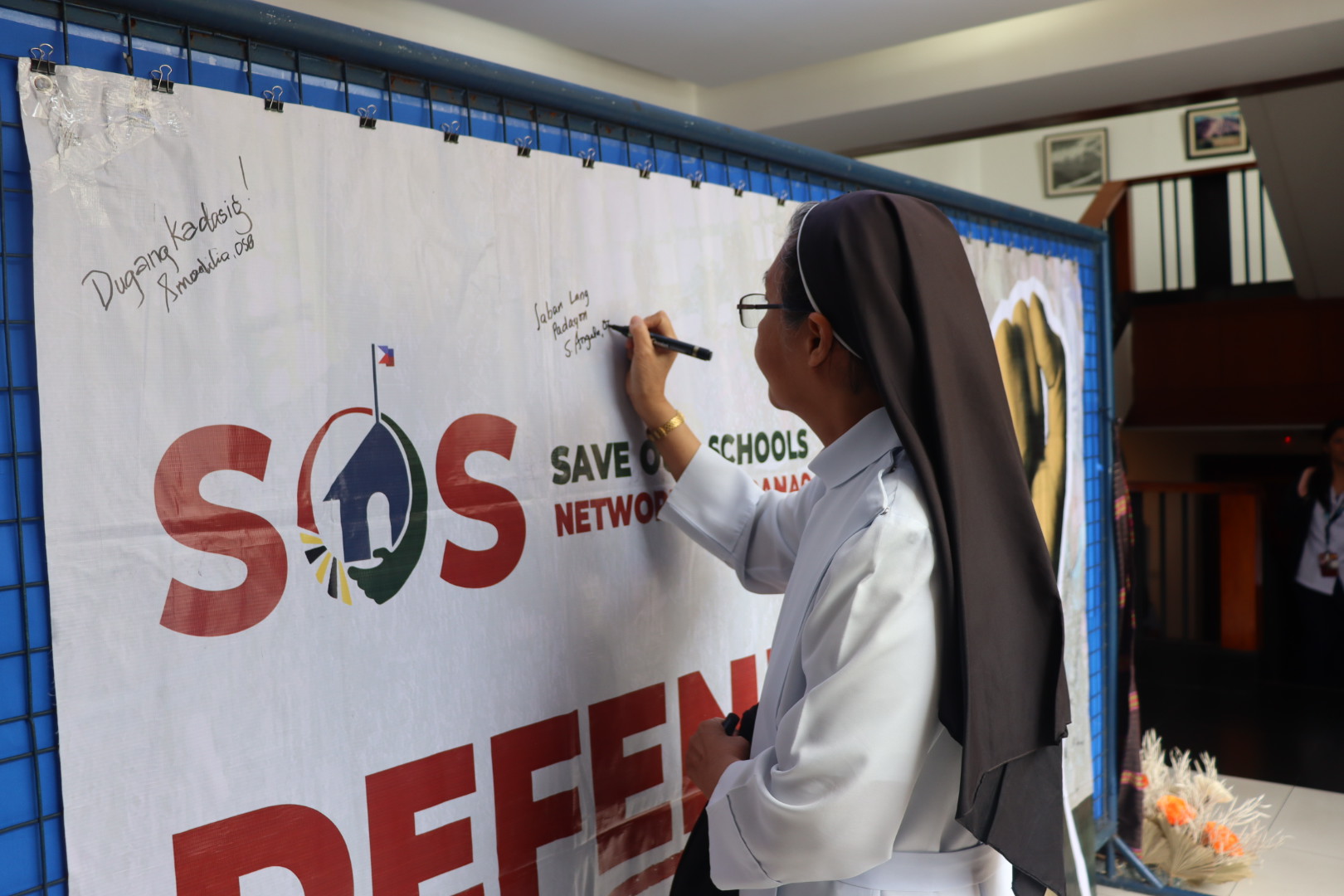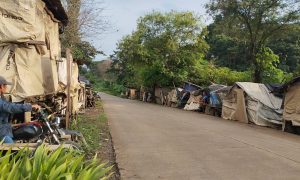Paghinumdum alang sa Hustisya: 10 Years After the Lianga Massacre
On September 2, 2025, Lumad leaders, educators, church people, students, and advocates gathered at the Adamson University Theater in Manila to mark the 10th year commemoration of the Lianga Massacre, co-organized and hosted by the Adamson University Cultural Affairs Office.
With the theme “Paghinumdum alang sa Hustisya (Remembering for Justice): Revisiting Lumad Schools from the Lianga Massacre to the Talaingod 13,” the solemn gathering became both an act of remembrance and a renewal of the collective commitment to justice and peace.
The commemoration included a photo exhibit on Lumad schools, a Eucharistic celebration, interfaith prayers, cultural performances, testimonies, and an open forum. It was not only a day to remember lives lost, but also a call to stand with Lumad communities who continue to defend their land, their schools, and their right to live in peace.
The event also underscored the necessary interlinkages between climate justice and defense of ancestral lands and natural resources. Indigenous Peoples, especially the Lumad, are environmental stewards who keep our mountains, forests, and rivers alive.
For the Mindanao Climate Justice Resource Facility, genuine sustainable development is only possible when we stand together with the Lumad People in defending their rights to land, environment, and education. We remember the past to continue fighting for a better, self-determined future.
Remembering the Lianga Massacre
On September 1, 2015, in Lianga, Surigao del Sur, Lumad leaders Dionel Campos, Datu Bello Sinzo, and Emerito Samarca — director of the ALCADEV Lumad school — were brutally murdered in front of their community. They were targeted for their defense of Lumad education and their opposition to destructive mining operations that sought to enter their ancestral domain.
The atrocity sparked the widespread call to “STOP LUMAD KILLINGS,” amplified through the Manilakbayan caravans of 2015, 2016, and 2017, which brought thousands of Lumads and their allies to the nation’s capital to demand justice and protection.
Tragically, the violence did not end there. In 2018, the Talaingod 13 — Lumad teachers and advocates — were arrested during a solidarity mission and later convicted on false charges in 2024. In 2022, volunteer teachers Chad Booc and Jurain Ngujo were killed in New Bataan, Davao de Oro, an act widely condemned as a massacre by human rights groups. These incidents reveal a sustained campaign of harassment, red-tagging, and criminalization against those who defend Lumad schools and ancestral lands.
Our martyred Indigenous Peoples leaders, teachers and advocates stood up for Lumad communities, the rights of the Lumad youth and the environment. Lumad schools integrated land and environmental stewardship in their curriculum to educate the Lumad youth in protecting their land and advocating for environmental and climate justice and revitalizing Indigenous practices and knowledge systems to sustain the agricultural needs of their communities.
Voices from the Commemoration
The day’s reflections were anchored by the opening Eucharistic celebration, where the officiating priest reminded the assembly: “All that is needed for evil to triumph is for good people to remain silent.” The message set the tone for testimonies that followed — calls not only to remember, but to recommit.
The program opened with the national anthem followed by an interfaith prayer. The community gathered in silence with the Adamsonian Prayer and a solemn message from Datu Matanem Monico Cayog, Bagobo leader from Mindanao.

Fr. Daniel welcomed everyone, especially the Lumad witnesses, affirming that “it is our privilege to listen to them.” He recalled that September is the month of St. Vincent de Paul, patron of the poor and marginalized, and said that if he were alive today, “he would be with the Lumad.”
He raised how Lumad communities are protectors of the environment, yet are maliciously branded as rebels and terrorists. He reminded participants that to stand with the Lumad is to stand with truth and creation itself.

Sr. Concepcion expressed gratitude to Adamson University for opening its doors when “spaces for Lumad voices are small and constantly under threat.” She reminded the audience of the Vincentian Brothers who sheltered the persecuted during the Japanese occupation, linking their sacrifice to today’s struggle.
She stressed that Lumad schools do more than teach literacy — they preserve culture, tradition, and ecological wisdom. “The violence isn’t random,” she said. “It is a deliberate effort to silence Lumad education.” She urged everyone not only to remember but to recommit: “This fight isn’t history, it’s happening now. Their fight is our fight, their dream is our dream.”

Fr. Ambray explained that the Lianga Massacre was not only about silencing leaders but also about claiming ancestral lands. “Mindanao is wealthy, but its people remain poor,” he said, pointing to the relentless extraction of resources by powerful interests.
As both anthropologist and priest, he testified that it was the Manobo who educated and evangelized him. Contrasting the claims of tech billionaires who tout artificial intelligence as the key to solving the climate crisis, he lifted up the “organic intelligence of the Lumad” as the true path to sustainability.
“The cry of the earth is the cry of the poor,” he reminded, urging participants to follow the example of St. Oscar Romero, who was not afraid of speaking out against injustice even at the cost of his own life.
He closed with wisdom from a Manobo elder, who, when asked why there were no beggars in their community, simply said: “We take care of our own.” For Fr. Ambray, it was more than an answer — it was as if Christ himself was speaking through the elder, reminding him that the Gospel is alive in the Lumad way of caring for one another. In that moment, he saw how indigenous wisdom and Christian faith flow together, both proclaiming the same truth: a community that refuses to abandon its poor is a community where God dwells.
A Celebration of Culture
Before the testimonies, the audience was treated to a rousing folk dance presentation by the Adamson University Dance Company. This vibrant performance was a beautiful hybrid of indigenous Filipino traditions, celebrating the richness of culture that Lumad schools fight to preserve.
The dance served as a reminder that beyond stories of violence and dispossession lies a living heritage that deserves not only to be remembered, but also to be cherished and passed on with pride.
Lumad Testimonies: Courage in the Face of Violence

Eufemia recalled how she and 200 others were forced to watch the massacre of their leaders. The perpetrators told them the killings would have been avoided if they had allowed mining companies to enter. “They were merciless,” she said. Militarization persists, justice remains absent, and perpetrators walk free. But she vowed: “We will continue the struggle for ancestral land and self-determination.”

Myra spoke of her brother Davie, a farmer and former Lumad school student, who was tortured and killed by state forces. She denounced extrajudicial killings that span administrations, noting that both the Duterte and Marcos Jr. regimes have blood on their hands. “The fight of the Lumads is the fight of all Filipinos who believe life is sacred,” she declared.

Nico recalled how her brother Chad, inspired by Lumads during the Manilakbayan, became a volunteer teacher and was later killed under false pretenses of an armed encounter. “Those who bring light must bear burning,” she reflected, pledging to continue his fight.

Lerma described the hardship of children walking hours to reach school before Lumad schools were built. These schools became sanctuaries of learning and empowerment, yet she was jailed for nine months simply for teaching. She denounced the criminalization of the Talaingod 13 while corporations freely destroy mountains. “The Creator did not make us to suffer. We must stand up and speak,” she affirmed.

Angelika recounted threats from paramilitary groups forcing them to abandon their school. She compared her classmates to Harry Potter boarders, except “they had powers against evil, but we didn’t.” She reflected that their real power lies in critical thinking — kinaadman, ancestral wisdom — which fuels their resistance against the true criminals.

Dr. Tan recalled how UP provided sanctuary to Lumads during the Manilakbayan, recognizing them as “visiting professors, real experts of life.” He urged that their stories — their versions and truths — must be documented for the next generations, so history cannot be erased.
Dialogue and Commitment: The Open Forum
During the open forum, students asked how they could support the Lumad struggle. The responses from speakers and Lumad leaders carried both urgency and encouragement:
“Learn the truth, and use your prophetic voice to amplify our cause.”
“Study the root causes — the struggles against poverty and injustice in Manila are connected to ours in Mindanao.”
“Stand for truth. Open your eyes. Study history.”
“Integrate with Lumad communities to see our actual conditions.”
“The youth are the inheritors of this world — continue the fight. Change depends on our action.”
“Do not be afraid, because we are not alone.”
Fr. Ambray reminded the students with conviction: “Should we stop when threatened? No. We have a duty to God and Country that is larger than ourselves.”
Renewing the Call
In her closing remarks, Sr. Odilia Bulayungan reminded everyone that the gathering was “more than remembrance — it is about conviction. The truth cannot be silenced.” She urged that the event be seen as a seed of unity and action, anchored in the words of Christ:
“Let the little children come to me, and do not hinder them, for the kingdom of heaven belongs to such as these.” (Matthew 19:14)
She called for the reopening of Lumad schools, justice for the victims of the Lianga Massacre and the Talaingod 13, and a renewed commitment from the Church: “We must evangelize, and be evangelized by the poor.”
Her final challenge was clear: “Our call is Ora et Labora — Pray and Work. Let us continue the struggle they started.”
The commemoration ended not in silence, but in celebration. Angelika Moral and Lerma Diagone invited everyone to join them in dancing the Kastifun, a traditional B’laan dance of gathering and unity.
The movement of feet and hands became a living symbol of solidarity — a reminder that the struggle for justice is also a struggle for life, community, and joy.
Advocates, educators, students, and leaders renewed their commitment to stand with the Lumad through a signature wall at the mini-exhibit outside the theater.
This event was made possible through collaboration and partnership with the Save Our Schools Network (SOS) – Mindanao, Educators Forum for Development (EFD) – Mindanao, Missionary Benedictine Sisters of Tutzing (OSB) – Socio-Pastoral Apostolate (SPA) and Adamson University Cultural Affairs Office.
Part of an upcoming larger exhibit commemorating Lumad schools, the installation gave a preview of the continuing call for justice for the Lianga Massacre victims, acquittal for the Talaingod 13, and the reopening of Lumad schools.
 Ten years after the Lianga Massacre, the call remains urgent: remember, resist, and renew the struggle for justice.
Ten years after the Lianga Massacre, the call remains urgent: remember, resist, and renew the struggle for justice.


